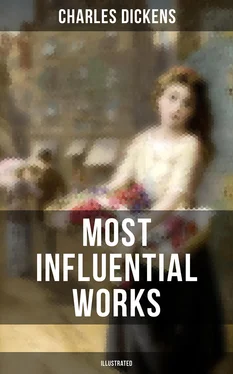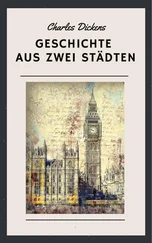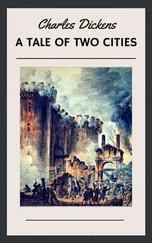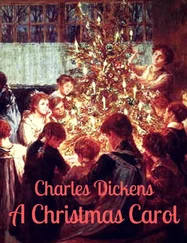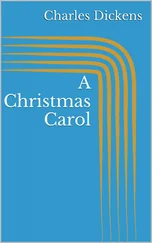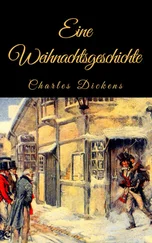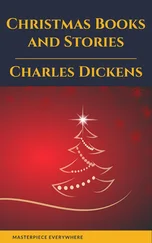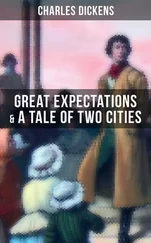But now a fearful circumstance occurs.
‘Mis-ter and Mis-sus Podsnap!’
‘My dear,’ says Mr Veneering to Mrs Veneering, with an air of much friendly interest, while the door stands open, ‘the Podsnaps.’
A too, too smiling large man, with a fatal freshness on him, appearing with his wife, instantly deserts his wife and darts at Twemlow with:
‘How do you do? So glad to know you. Charming house you have here. I hope we are not late. So glad of the opportunity, I am sure!’
When the first shock fell upon him, Twemlow twice skipped back in his neat little shoes and his neat little silk stockings of a bygone fashion, as if impelled to leap over a sofa behind him; but the large man closed with him and proved too strong.
‘Let me,’ says the large man, trying to attract the attention of his wife in the distance, ‘have the pleasure of presenting Mrs Podsnap to her host. She will be,’ in his fatal freshness he seems to find perpetual verdure and eternal youth in the phrase, ‘she will be so glad of the opportunity, I am sure!’
In the meantime, Mrs Podsnap, unable to originate a mistake on her own account, because Mrs Veneering is the only other lady there, does her best in the way of handsomely supporting her husband’s, by looking towards Mr Twemlow with a plaintive countenance and remarking to Mrs Veneering in a feeling manner, firstly, that she fears he has been rather bilious of late, and, secondly, that the baby is already very like him.
It is questionable whether any man quite relishes being mistaken for any other man; but, Mr Veneering having this very evening set up the shirt-front of the young Antinous in new worked cambric just come home, is not at all complimented by being supposed to be Twemlow, who is dry and weazen and some thirty years older. Mrs Veneering equally resents the imputation of being the wife of Twemlow. As to Twemlow, he is so sensible of being a much better bred man than Veneering, that he considers the large man an offensive ass.
In this complicated dilemma, Mr Veneering approaches the large man with extended hand and, smilingly assures that incorrigible personage that he is delighted to see him: who in his fatal freshness instantly replies:
‘Thank you. I am ashamed to say that I cannot at this moment recall where we met, but I am so glad of this opportunity, I am sure!’
Then pouncing upon Twemlow, who holds back with all his feeble might, he is haling him off to present him, as Veneering, to Mrs Podsnap, when the arrival of more guests unravels the mistake. Whereupon, having re-shaken hands with Veneering as Veneering, he re-shakes hands with Twemlow as Twemlow, and winds it all up to his own perfect satisfaction by saying to the last-named, ‘Ridiculous opportunity—but so glad of it, I am sure!’
Now, Twemlow having undergone this terrific experience, having likewise noted the fusion of Boots in Brewer and Brewer in Boots, and having further observed that of the remaining seven guests four discrete characters enter with wandering eyes and wholly declined to commit themselves as to which is Veneering, until Veneering has them in his grasp;—Twemlow having profited by these studies, finds his brain wholesomely hardening as he approaches the conclusion that he really is Veneering’s oldest friend, when his brain softens again and all is lost, through his eyes encountering Veneering and the large man linked together as twin brothers in the back drawing-room near the conservatory door, and through his ears informing him in the tones of Mrs Veneering that the same large man is to be baby’s godfather.
‘Dinner is on the table!’
Thus the melancholy retainer, as who should say, ‘Come down and be poisoned, ye unhappy children of men!’
Twemlow, having no lady assigned him, goes down in the rear, with his hand to his forehead. Boots and Brewer, thinking him indisposed, whisper, ‘Man faint. Had no lunch.’ But he is only stunned by the unvanquishable difficulty of his existence.
Revived by soup, Twemlow discourses mildly of the Court Circular with Boots and Brewer. Is appealed to, at the fish stage of the banquet, by Veneering, on the disputed question whether his cousin Lord Snigsworth is in or out of town? Gives it that his cousin is out of town. ‘At Snigsworthy Park?’ Veneering inquires. ‘At Snigsworthy,’ Twemlow rejoins. Boots and Brewer regard this as a man to be cultivated; and Veneering is clear that he is a remunerative article. Meantime the retainer goes round, like a gloomy Analytical Chemist: always seeming to say, after ‘Chablis, sir?’—‘You wouldn’t if you knew what it’s made of.’
The great looking-glass above the sideboard, reflects the table and the company. Reflects the new Veneering crest, in gold and eke in silver, frosted and also thawed, a camel of all work. The Heralds’ College found out a Crusading ancestor for Veneering who bore a camel on his shield (or might have done it if he had thought of it), and a caravan of camels take charge of the fruits and flowers and candles, and kneel down be loaded with the salt. Reflects Veneering; forty, wavy-haired, dark, tending to corpulence, sly, mysterious, filmy—a kind of sufficiently well-looking veiled-prophet, not prophesying. Reflects Mrs Veneering; fair, aquiline-nosed and fingered, not so much light hair as she might have, gorgeous in raiment and jewels, enthusiastic, propitiatory, conscious that a corner of her husband’s veil is over herself. Reflects Podsnap; prosperously feeding, two little light-coloured wiry wings, one on either side of his else bald head, looking as like his hairbrushes as his hair, dissolving view of red beads on his forehead, large allowance of crumpled shirt-collar up behind. Reflects Mrs Podsnap; fine woman for Professor Owen, quantity of bone, neck and nostrils like a rocking-horse, hard features, majestic head-dress in which Podsnap has hung golden offerings. Reflects Twemlow; grey, dry, polite, susceptible to east wind, First-Gentleman-in-Europe collar and cravat, cheeks drawn in as if he had made a great effort to retire into himself some years ago, and had got so far and had never got any farther. Reflects mature young lady; raven locks, and complexion that lights up well when well powdered—as it is—carrying on considerably in the captivation of mature young gentleman; with too much nose in his face, too much ginger in his whiskers, too much torso in his waistcoat, too much sparkle in his studs, his eyes, his buttons, his talk, and his teeth. Reflects charming old Lady Tippins on Veneering’s right; with an immense obtuse drab oblong face, like a face in a tablespoon, and a dyed Long Walk up the top of her head, as a convenient public approach to the bunch of false hair behind, pleased to patronize Mrs Veneering opposite, who is pleased to be patronized. Reflects a certain ‘Mortimer’, another of Veneering’s oldest friends; who never was in the house before, and appears not to want to come again, who sits disconsolate on Mrs Veneering’s left, and who was inveigled by Lady Tippins (a friend of his boyhood) to come to these people’s and talk, and who won’t talk. Reflects Eugene, friend of Mortimer; buried alive in the back of his chair, behind a shoulder—with a powder-epaulette on it—of the mature young lady, and gloomily resorting to the champagne chalice whenever proffered by the Analytical Chemist. Lastly, the looking-glass reflects Boots and Brewer, and two other stuffed Buffers interposed between the rest of the company and possible accidents.
The Veneering dinners are excellent dinners—or new people wouldn’t come—and all goes well. Notably, Lady Tippins has made a series of experiments on her digestive functions, so extremely complicated and daring, that if they could be published with their results it might benefit the human race. Having taken in provisions from all parts of the world, this hardy old cruiser has last touched at the North Pole, when, as the ice-plates are being removed, the following words fall from her:
Читать дальше
